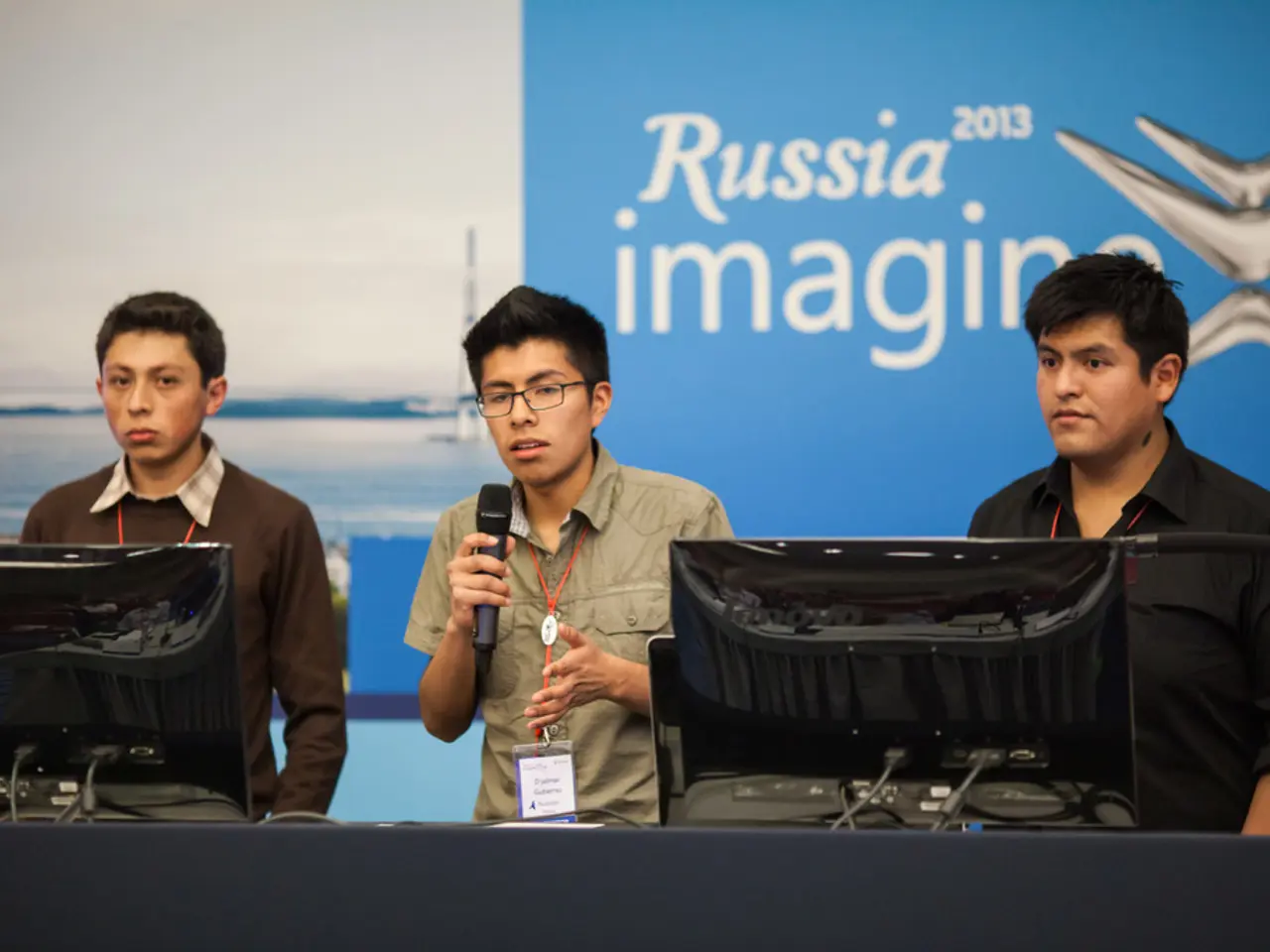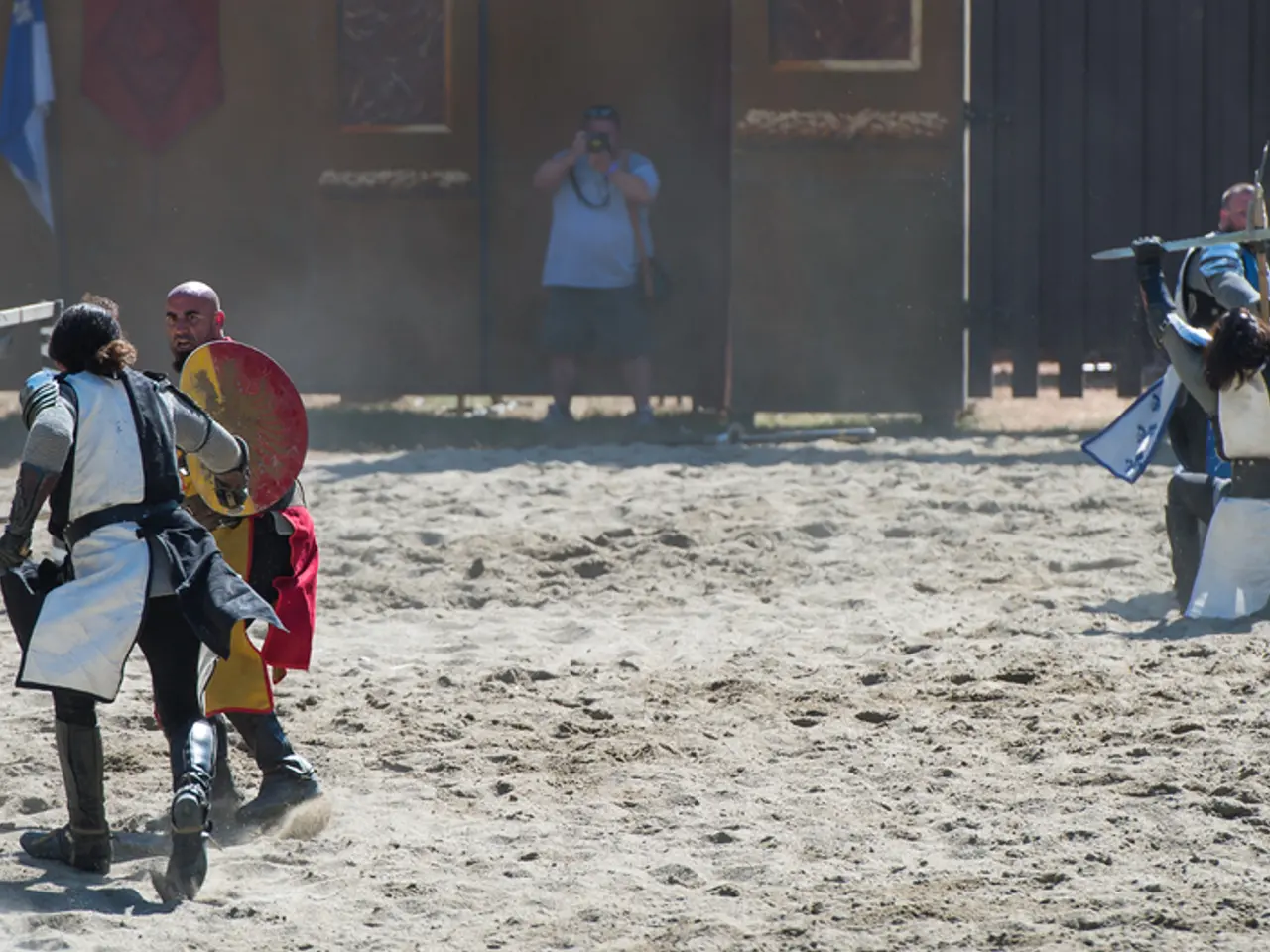"German foreign policy prioritizes Ukraine as its pivotal objective"
In a significant move to bolster Ukraine's defense against the ongoing Russian invasion, Germany has announced a **total aid package of approximately 9 billion euros ($10.4 billion)** for 2025, with a major focus on long-range weapons and strike capabilities [1][2].
German Foreign Minister, Johann Wadephul, visited Kyiv, Ukraine on Monday, where he reaffirmed Germany's continued support for Ukraine. Wadephul is also scheduled to hold talks with Ukrainian Foreign Minister Andrii Sybiha [5].
The aid package aims to enhance Ukraine's indigenous production capacity by financing and co-developing long-range weapon systems with Ukraine [1][2][4]. The first jointly produced systems are expected to be available within months.
One significant aspect of this support is a recently signed contract to supply Ukraine with over 500 advanced AN-196 strike drones. These drones, capable of flying up to 1,200 kilometers and delivering precise strikes with a 50 kg explosive payload, will significantly boost Ukraine's ability to target important enemy positions far behind the front lines [3].
However, Germany has so far refused to supply German-made Taurus long-range cruise missiles, which can strike targets more than 500 kilometers inside Russia. Chancellor Friedrich Merz maintains a policy of "strategic ambiguity" on this issue, aiming to avoid further escalation with Russia [1][3].
The shift in focus from traditional tank and jet support towards modern, technology-driven warfare, such as drone combat and electromagnetic warfare, reflects Germany's aim to improve Ukraine’s battlefield effectiveness and strengthen its negotiating position in peace talks by increasing its military leverage [2][4].
Meanwhile, Russia has been launching a series of large-scale attacks, with Ukraine reporting over 114 missiles, over 1270 drones, and almost 1100 glide bombs launched by Russia over the course of last week [6]. Despite these attacks, the Ukrainian Air Force successfully battled off a large-scale Russian air attack on Saturday night, consisting of 477 drones and 60 missiles [7].
President Donald Trump did not rule out providing additional Patriot air defense missiles after a meeting with President Zelenskyy [8], but Washington has not announced any additional backing for Kyiv since January [9].
Russian Foreign Minister Sergei Lavrov stated that a commitment by NATO countries to increase defense spending to 5% of the GDP could lead to the collapse of the alliance [10]. Russia is currently spending around 6.3% of its GDP on its armed forces, the highest level since the Cold War [11], with defense spending accounting for around 32% of the 2025 federal budget in Russia [12].
As the conflict continues, Germany remains a crucial ally for Ukraine, providing significant military aid to strengthen its defense capabilities and negotiating position.
- The German Foreign Minister's visit to Kyiv, Ukraine, underscores the media's general news coverage of war-and-conflicts, where Germany is reaffirming its commitment to supporting Ukraine in their ongoing conflict with Russia.
- In the realm of politics, Germany's aid package, worth 9 billion euros, is targeted towards enhancing Ukraine's warfare abilities, including the production of long-range weapon systems and supply of advanced AN-196 strike drones.
- Amidst the war-and-conflicts in Europe, Germany's strategy of focusing on modern, technology-driven warfare such as drone combat and electromagnetic warfare, is designed to boost Ukraine's bargaining power in peace talks, while maintaining a policy of strategic ambiguity regarding the supply of long-range cruise missiles to avoid further conflict escalation.






